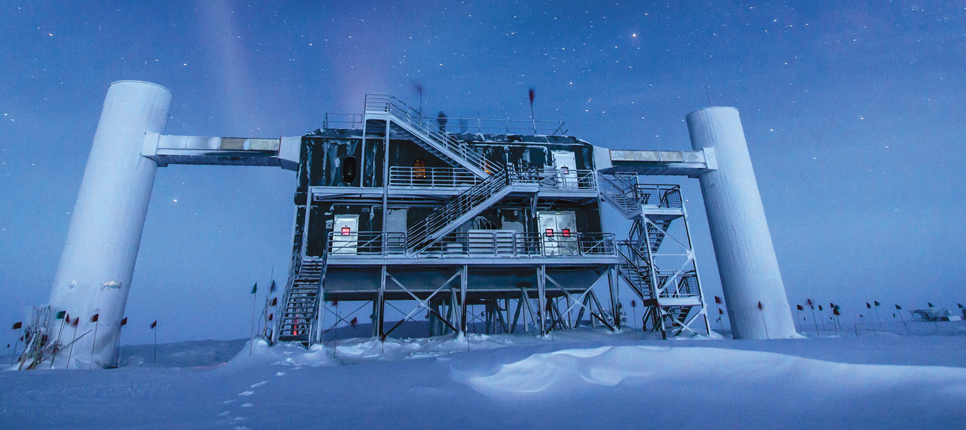More ice, more neutrinos
DOI: 10.1063/PT.3.2416
The South Pole neutrino detector that spans a cubic kilometer of Antarctic ice has observed high-energy neutrinos from outside our solar system. That spectacular announcement came from the IceCube team last year, based on three years of observation. “We still don’t know what we are seeing,” says principal investigator Francis Halzen of the University of Wisconsin–Madison. “The thing to do is get more events and figure out where they come from and what generates them.”

The surface station for the IceCube neutrino detector at the South Pole.
FELIPE PEDREROS

To that end, the IceCube team wants to increase the detector’s volume 5- to 10-fold to widen the net for spotting high-energy cosmic neutrinos. The main goal is to collect several hundred of the 1015-eV neutrinos per year. An expanded detector would also observe
a handful of 1018-eV neutrinos each year, says Halzen. “That’s not a large number, but they point to the source.”
IceCube’s sensitivity at higher energies would be improved by increasing the number and spacing of optical Cherenkov sensors drilled into the ice. In addition, the team wants to increase the sensor density in the existing detector. That project, called the Precision IceCube Next Generation Upgrade, would look for low-energy atmospheric neutrinos to determine the neutrino mass hierarchy and measure oscillation parameters.
The team estimates that the expansion and densification together would come to less than $300 million—about the same as the existing facility. The IceCube collaboration includes people from 43 institutions in 12 countries.
More about the Authors
Toni Feder. tfeder@aip.org





